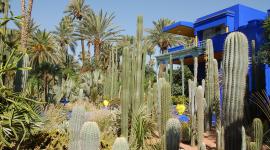The Cultural Landscape Foundation’s Morocco Adventure
From the daredevil choreography of mopeds, pushcarts, and pedestrians in the labyrinthine medinas stocked with glittering glassware, ceramics, caftans, colorful spices, leather goods and elaborately incised metal work, to the transcendent aromas in the Valley of the Roses, and operatic sunsets at the confluence of the Mediterranean Sea and the Atlantic Ocean, Morocco’s people, food, and many natural and cultural treasures beguiled, bemused, captivated, and romanced attendees of The Cultural Landscape Foundation’s (TCLF) most recent overseas excursion.

This fifth trip – the third with the worldly, knowledgeable, and indefatigable Madrid-based tour leader Sofia Barroso of AroundArt – featured an array of private homes and gardens, superb meals, intriguing art, and fascinating people. Sofia corralled expert guides at each destination and crackerjack drivers who navigated, at times, some very tricky, unpaved terrain. The adventure started in Tangier at the exclusive and relaxing oceanside Le Mirage Hotel, our home base.

Following a welcoming toast at the hotel, the first evening kicked off with dinner at Villa Teborek Allah, the Aladdin’s cave-like home (recently featured in Rizzoli’s The House of a Lifetime: A Collector’s Journey in Tangier) of the very charming Umberto Pasti, a self-taught gardener, interior designer, and successful author.

The next morning began at Bab Essalam, a private hillside garden created by French landscape designers Eugenie Denarnaud and Louis Lazaroo. The day continued with a tour of Donabo Gardens, northern Morocco’s first botanical garden, which opened in 2022, with its energetic co-founder Paul Belvoir. Lunch on a sheltered hilltop location amid numerous pines included an elegant chicken tagine, temperate breezes, and views twelve miles across the Straits to Spain and the Rock of Gibraltar. The group was later joined by co-founder Princess Lalla Malika Alaoui.
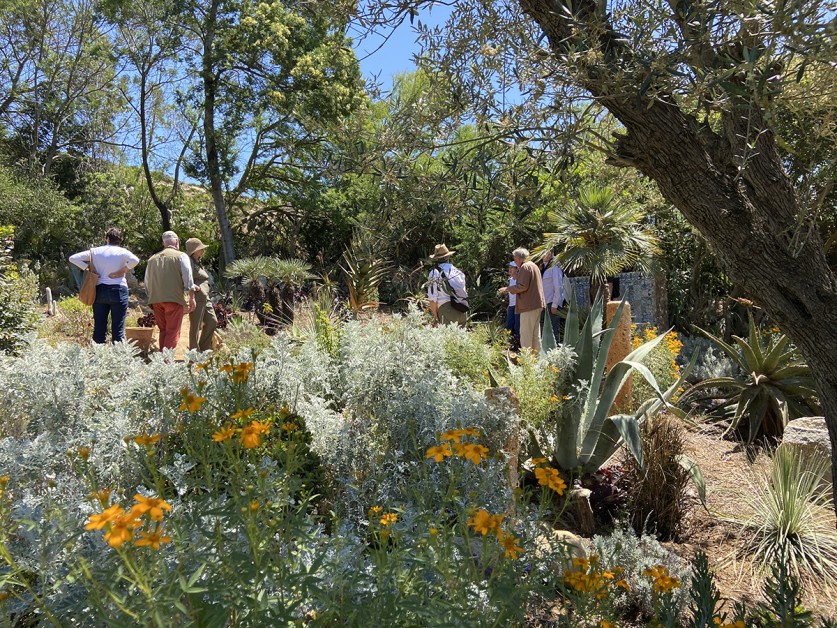
The next highlight was a visit to Rohuna, a coastal village some 40 miles south of Tangier and site of an extensive series of gardens designed over the past 25 years by Umberto Pasti (and subject of Rizzoli’s Eden Revisited: A Northern Moroccan Garden).

The horticulturally exuberant hillside oasis is honeycombed with various garden rooms each containing arresting combinations of color, aroma, and texture, and reached by a network of inviting paths and short stairways. Following a sumptuous lunch (with ocean views), the group visited the famed blue and white coastal village of Assilah.
That evening we dined at Dar Quetzane, the richly appointed museum-like private home and garden of the entertaining British antiques dealer and collector Gordon Watson, who permanently settled in Morocco during the global pandemic. Our group was augmented by several of Watson’s friends including Jasper Conran, the noted English designer of womenswear and home furnishings.
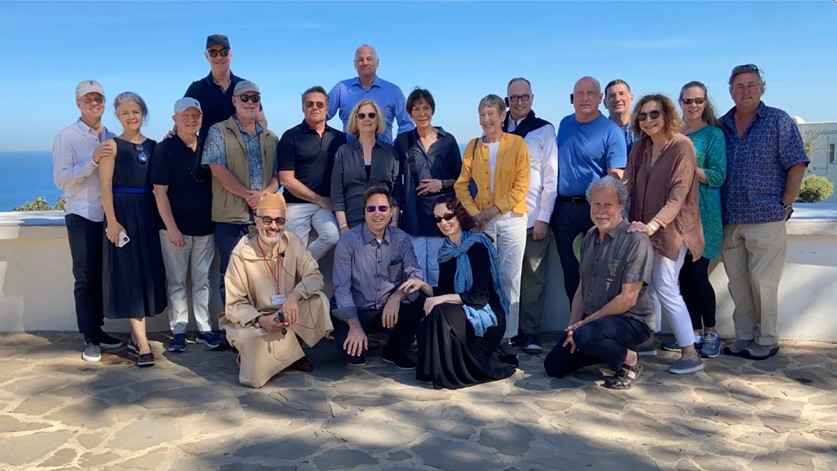
Morroco’s connection with the US dates to the late 1700s when the north African nation was the first to recognize the rebelling colony’s independence, as recounted at the American Legation in Tangier. The once formal site of the American government’s presence (which is now in the capital, Rabat), it’s now a museum with an intriguing array of artifacts, paintings, photos, and dioramas (the latter thanks to Malcolm Forbes), about the US-Morocco relationship and Moroccan history. To get to Marrakech, the group took two trains via Casablanca, and then went to the Montresso Foundation, a center for contemporary art founded in 2009, and the site’s Jardin Rouge. For the next several days, the luxury boutique El Fenn hotel, located on the edge of the medina, was home.

The first full day in Marrakech began at the Villa Oasis, the exotic former home and garden of world-renown French designer Yves St. Laurent and Pierre Bergé, and the adjacent Jardin Majorelle. The latter was originally designed in the 1920s by the French artist and plant collector, Jacques Majorelle. The garden was restored by St. Laurent and garden designer Madison Cox. The site more than lives up to its hype, but get there early, it’s very popular and easily gets crowded. The property’s YSL Museum included a temporary exhibition about American artist Cy Twombly’s first trip to north Africa and Italy (in 1952-53 with the artist Robert Rauchenberg), that featured sketchbooks, photos, correspondence, and an early painting. Of his experiences in Sicily, Twombly wrote on September 6, 1952: “I was overcharged, and robbed continually – it was a great experience.”
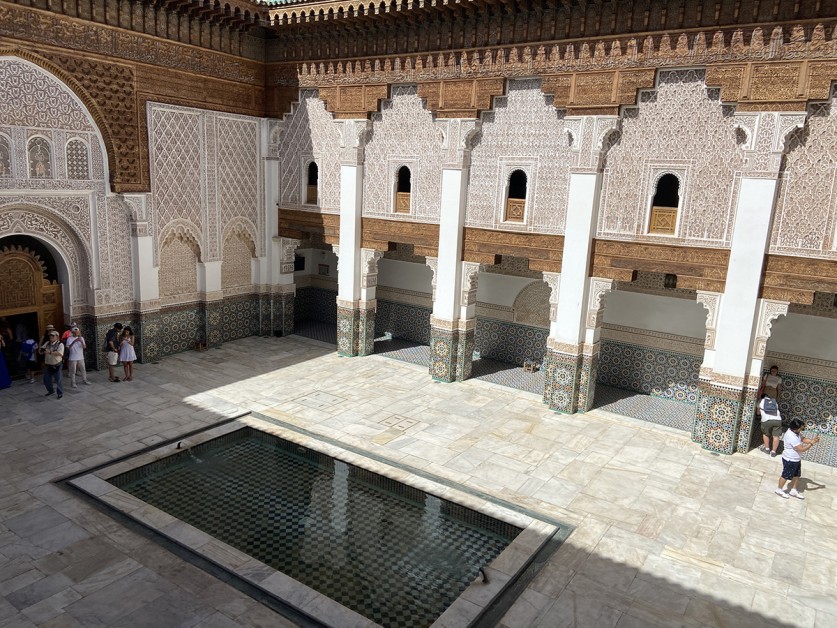
The day continued at the opulent Medersa Ben Youssef, a madrassa (Islamic school) founded in the fourteenth century. Containing more than 100 rooms of varying scales (from intimate enclosures for private study to grand and imposing public spaces), the complex is encrusted throughout in a cornucopia of intricate and lacey stucco carvings, dazzling tile work, and richly incised wood.
Additional examples of jaw dropping artistry and craft-making could be found at: le Musée des Confluences Dar el Bacha, a restored palace that was once the home of Thami El Glaoui, the pacha of Marrakech; le Jardin de Secret located within the bustling medina with lush, entrancing gardens, and elegant tile water features; and, the ornate royal Saadian Tombs complex, which dates to the sixteenth century and is composed of a network of exquisitely decorated mausolea of mesmerizing and awe-inspiring beauty.

The MAP Marrakech – Monde des Arts de la Parure, which opened in November 2022, is an opulent and brilliantly designed museum featuring some 3,000 examples of jewelry from throughout north Africa and parts of the Mediterranean, and the roof top café is itself a lush garden oasis.
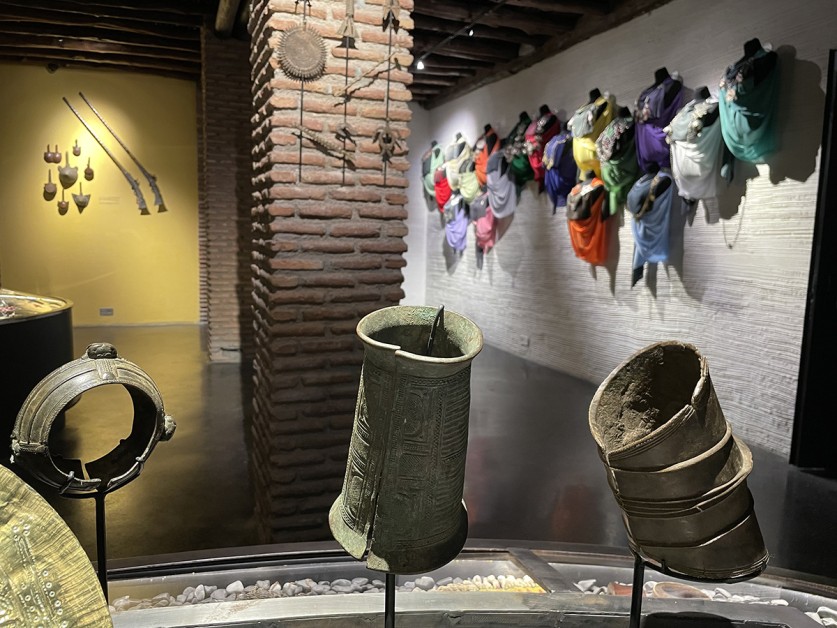
Outside of the city we toured the new, vast, and regal Oberoi Hotel where we had lunch and toured the landscape by Madison Cox. The evening concluded with a dinner at the home of the distinguished art collectors Yannick Vu and Ben Jakober, which also included and Mr. Cox. The next morning featured a visit to Menara, the city's oldest garden (1157), which includes an ornately decorated two-story pavilion that looks onto a massive pool - some 650 feet by 500 feet - that irrigates the surrounding orchards.
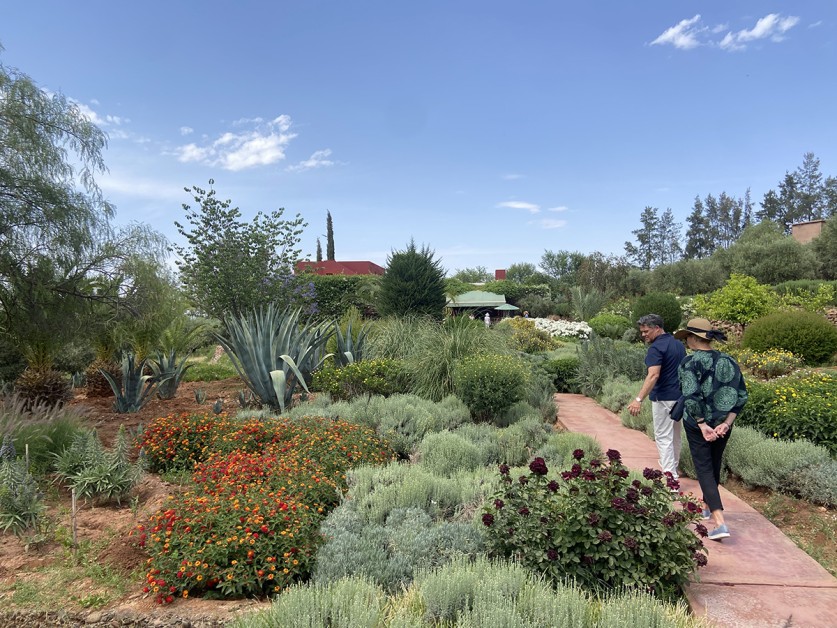
In Tahannout Moroccan artists Yamou and Fatiha Zemmouri greeted the group at their respective homes and studios; each artist designed their own garden (both have views to the Atlas Mountains).

Twenty-five miles from the medina, our final dinner was a candle-lit affair at the nine-acre Jnane Tamsna (“Big Garden”) Boutique Hotel Palmeraie Marrakech, created by lawyer turned designer Meryanne Loum-Martin and her husband Gary, an ethno-botanist. While half the group returned home, the remainder climbed into two small vans and traversed through the Atlas Mountains to settle in at a private desert home, Dar al Garnati, in Skoura. The hours-long drive featured dramatic views of arid rocky landscapes that ranged from flat to vertiginous, punctuated by low lush green scrub, mud brick kasbahs, several eroded by the years of the area’s climatic extremes, and dry riverbeds. Along the way we dined at a large, tented restaurant, and explored the Kasbah at Telouet, a historic strategic outpost in the Western High Atlas for caravans traveling from Marrakech to Ouarzazate (the latter is now home to film studios).
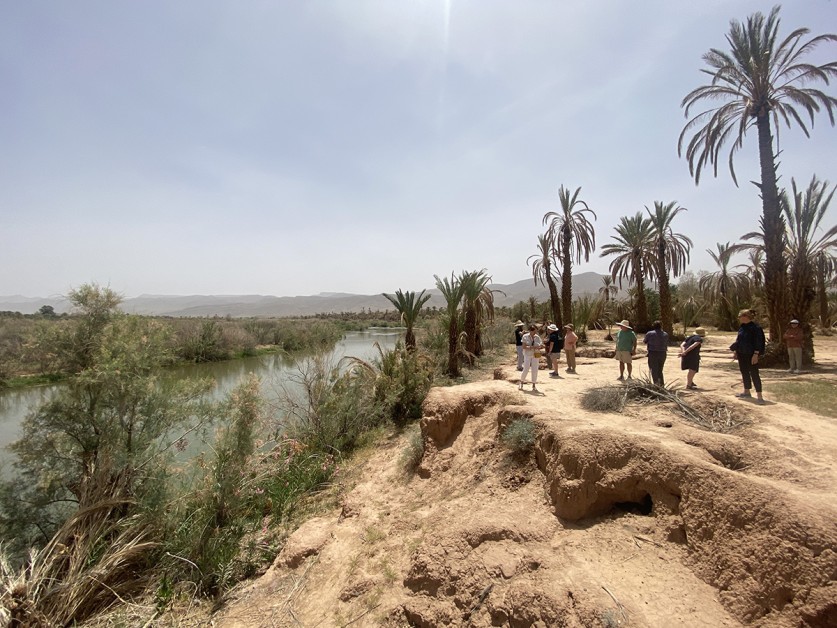
After a drive through the mountains to the oasis of Agdz, a classic caravansary, we settled in for lunch at the Hara Lodge Oasis overlooking the Draa River, Morocco’s longest. The river is dammed much of the year and allowed to flow freely three times annually for some twenty days each time. Later, while some perused goods at the souk of Quarzazate, others in group visited the ancient kasbah Taourirt.
One of our final destinations was the Valley of the Roses, where we wandered through acres of fragrant damask roses that were in the process of being harvested to create perfumes and oils. Our final dinner at Dar al Garnati featured a four-piece band playing traditional Moroccan music and much dancing. On route back to Marrakech we visited the formidable Berber Ksar Ait Benhaddu, a UNESCO World Heritage Site. The steep and picturesque hillside village of earthen buildings is surrounded by defensive walls and crenelated towers; and the hilltop offers exceptional panoramic views. The ksar has been the backdrop for movies including Gladiator and the television series Game of Thrones.
TCLF’s Moroccan excursion provided a heady and rich taste of the treasures of this north African kingdom – from souks, medinas, minarets, and mountains (and cats in the kasbahs), to a multitude of great gardens, exceptional meals, and warm, generous people – especially our wonderful tour guides, drivers, and the gracious and gregarious Sara at Dar al Garnati. Planning is underway for TCLF’s next international excursion, so stay tuned.





